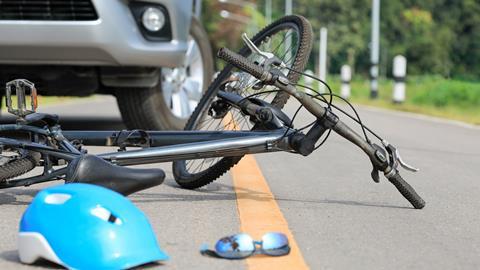Pedestrian and cyclist rule changes could also impact claims volumes – motor insurers will have a lot to juggle if they don’t prioritise customer education now
By Editor Katie Scott
As if the motor insurance market didn’t have enough on its plate already thanks to the Official Injury Claim (OIC) portal teething and the upcoming FCA-induced pricing changes, but now it will also need to analyse the implications arising from the Department for Transport’s changes to the Highway Code - industry commentators believe “the introduction of the concept of presumed liability” could detrimentally influence claims costs.
Following an initial consultation in March 2021, which received 3,200 responses, Highways England and the Driver and Vehicle Standards Agency’s (DVSA) updated guidance for the Highway Code was presented to parliament in June 2021.
This proposed that 33 existing rules should be amended and that two new rules needed be introduced to the Code – these are expected to take effect later this year.
According to law firm DAC Beachcroft, “a number of amendments to the additional information within the Code and its annexes will also be made”.
Highways England stated that the Highway Code changes will:
- Provide clearer advice on where to stop in an emergency.
- Emphasise the importance of not driving in a lane closed by a red ‘X’.
- Detail the use of variable speed limits to manage congestion.
- Provide updated guidance on key factors that contribute to safety-related incidents, including driving while tired, unroadworthy vehicles, safe towing, tailgating and driving in roadworks.
‘Headline change’
A “headline change” within the revised Code that could impact on insurers is “the introduction of the concept of presumed liability”, which is linked to the newly described “hierarchy of road users”, said Christina McDonald, principal associate at national law firm Weightmans.
A bulletin produced by DAC Beachcroft – penned by partners Peter Allchorne, Caroline Hall and researcher Michael McCabe – described the hierarchy of road users as a “greater level of responsibility being imposed on those who can do the greatest harm should an accident occur”.

Although sounding sensible in principle, McDonald explained that this concept could detrimentally affect liability decisions and, in turn, stack up costs for insurers.
She said: “The introduction of a ‘hierarchy of road users’ is a headline change to the Code. This measure is intended to increase drivers’ awareness of the vulnerabilities of other road users and ensure that they exercise greater care.
“There are concerns from some quarters, particularly from haulage industry groups, that the hierarchy may, in practice, lead to the introduction of the concept of presumed liability.
“The question is whether criminal and civil courts will now be influenced by where each party involved in a collision sits within the hierarchy when deciding who is at fault.
“If so, insurers will likely face an increase in claims against drivers of larger vehicles and increased legal spend as liability is unravelled.
“Operators of large vehicles may experience greater difficulty recruiting drivers and [face] a rise in premiums [too]. To avoid the problem, it is vital that the government [makes] it clear when the legislation is laid before parliament for approval that the change is not intended to impact liability.”
DAC Beachcroft agreed with McDonald’s stance – the law firm said it has “serious concerns that, in practice, the hierarchy, as it is set out, could eventually lead to presumed liability for drivers”.
However, it added that “a hierarchy of road users is nothing new to [road traffic accident] claims, with the courts having long ago adopted the concept of the causative potency of the parties’ respective faults when assessing the extent of the parties’ liability”.
It continued: “By way of example, when considering an accident between a motor vehicle and a bicycle, the greater potential for the former to cause damage to the latter will be taken into account by the court when deciding liability.”
Increased claims risks
For McDonald, those within the motor insurance sector must also watch for “an increase in claims” due to freshly changed rules around pedestrian and cyclist rights of way potentially leading to more collisions.
She explained: “The new rule requiring drivers to give way to pedestrians when turning into and out of junctions could increase the risk to pedestrians and to other road users.
“For example, a pedestrian may start to cross the road without firstly checking it is safe to do so or having wrongly assumed that [the] driver has seen him or her and intends to give way. Drivers may have to break suddenly and harshly on seeing a pedestrian at a junction, leading to an increase in rear end shunts.

“Similarly, the new measures allowing cyclists to pass on the inside of vehicles could translate into more accidents or even fatalities. A higher burden is now being placed on drivers to spot cyclists, some of whom may have positioned themselves in a dangerous position within a driver’s blind spot.”
Despite these rule alterations, McDonald added that there is “no obligation for cyclists to increase their visibility to drivers, for example by wearing high visibility or light clothing, or to use any available cycle lanes or tracks”, meaning that “insurers will therefore need to be braced for a rise in the volume and potential severity of cyclist accidents at junctions, in turn leading to a potential rise in premiums”.
She continued: “Large vehicle operators will need to review their vulnerable road users policy, deliver comprehensive training to their drivers on the changes, once approved, and consider introducing equipment such as audible alerts on turning, side under protection, blind spot mirrors and cameras.”
Mitigating action
While agreeing that the Highway Code must be kept up to date, DAC Beachcroft is still apprehensive about the incoming amendments.
It said: “Will the changes in the Code give rise to changes in the courts’ approach to issues of liability between motorists on the one hand and cyclists and pedestrians on the other? The answer is almost certainly yes, but in reality, these changes are not likely to be major but rather on the periphery.
“Of course, there is a need for motorists to be made aware of the changes, but there is a distinct risk that too many pedestrians or cyclists, particularly the inexperienced, will view these changes as operating as a cloak of inviolability, giving them carte blanche to behave as if, as is seen in some European countries, they have automatic priority over other forms of transport. They do not and that is not what the new Code provides.”
McDonald concurred that “the changes have the clear potential to confuse road users”.
“Ahead of them being brought into law, it is essential that an effective and wide-reaching education programme is implemented to explain the changes, emphasise the entitlement of all to use the road and the need for each road user to continue [to] take responsibility for their own safety,” she said.
“Without this, the changes will not be widely adopted or understood, the goal of improved road safety will not be met and insurers will be faced with an increase in claims.”
Pinning motor insurance leaders down to speak on H2 claims trends has been nigh on impossible – trust me, I’ve tried. Due to the Covid-19 pandemic, national working pattern changes and the slow re-opening of society, no-one really knows what is going to be happening on the roads come the autumn.
Drivers who have been cooped up during the lockdowns are only now getting familiar with driving regularly again, using cars that have been gathering dust on driveways. How many of these road users will actually be aware of the incoming changes?
Education on these Highway Code changes are absolutely essential if motor insurers wish to avoid a steep incline in claims frequency and severity. Many are already reporting claims increasing in line with lockdown releasing, however failing to promote Highway Code amendments could see costs climb at a potentially unexpected rate.













































No comments yet